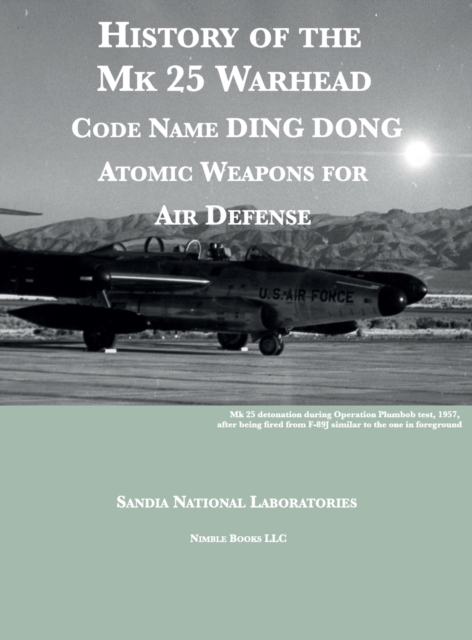History of the Mk 25 Warhead: Code Name DING DONG, Atomic Warheads for Air Defense

History of the Mk 25 Warhead: Code Name DING DONG, Atomic Warheads for Air Defense
The military requirements were driven by the potential of saturation attacks by mass formations of Soviet bombers and guided missiles that would in turn require defense of most of the perimeter of North America. "It was predicted that that air defense weapons would have to be produced in large numbers, possibly tens of thousands, in order to provide an effective defense of any sizable portion of the country. They would thus have to be economical, both in nuclear and nonnuclear costs. These weapons would have to be operationally ready at all times to respond to a surprise attack, and they would have to be able to withstand exposure to climatic extremes ranging from the arctic to the tropics. The weapons should require only minor maintenance, since it would not be possible to provide a sufficiently large group of thoroughly trained technicians."
The result of this analysis was the development beginning in 1954 of the Mk 25 air defense warhead. Beginning in 1957 the Mk 25 was deployed on the GENIE unguided air-to-air missile launched by F-89 and F-102 interceptors. The optimum yield was calculated by still-classified methods that involved tradeoffs between the probability of kill, the weight of the missile and aircraft, efficiency in the use of nuclear materials, and the time needed for the launch aircraft to escape. The Mk 25 and its successors were deployed on US and Canadian NORAD interceptors until the early 1980s.
To demonstrate that air defense nuclear weapons could be used without harm to the civilian population, the Air Force conducted a special demonstration during the John shot of the Operation Plumbo
PRP: 132.18 Lei
Acesta este Pretul Recomandat de Producator. Pretul de vanzare al produsului este afisat mai jos.
118.96Lei
118.96Lei
132.18 LeiLivrare in 2-4 saptamani
Descrierea produsului
The military requirements were driven by the potential of saturation attacks by mass formations of Soviet bombers and guided missiles that would in turn require defense of most of the perimeter of North America. "It was predicted that that air defense weapons would have to be produced in large numbers, possibly tens of thousands, in order to provide an effective defense of any sizable portion of the country. They would thus have to be economical, both in nuclear and nonnuclear costs. These weapons would have to be operationally ready at all times to respond to a surprise attack, and they would have to be able to withstand exposure to climatic extremes ranging from the arctic to the tropics. The weapons should require only minor maintenance, since it would not be possible to provide a sufficiently large group of thoroughly trained technicians."
The result of this analysis was the development beginning in 1954 of the Mk 25 air defense warhead. Beginning in 1957 the Mk 25 was deployed on the GENIE unguided air-to-air missile launched by F-89 and F-102 interceptors. The optimum yield was calculated by still-classified methods that involved tradeoffs between the probability of kill, the weight of the missile and aircraft, efficiency in the use of nuclear materials, and the time needed for the launch aircraft to escape. The Mk 25 and its successors were deployed on US and Canadian NORAD interceptors until the early 1980s.
To demonstrate that air defense nuclear weapons could be used without harm to the civilian population, the Air Force conducted a special demonstration during the John shot of the Operation Plumbo
Detaliile produsului











